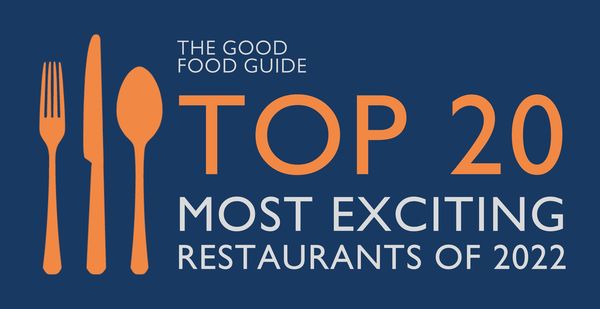When the first Spaghetti House opened on Goodge Street in 1955, the slogan in its window read ‘Spaghetti... but not on toast!’. In a country in which food rationing had only ended the year before, this exotic cuisine was a warm Mediterranean breeze drifting through a bleak landscape.
Almost 70 years later, we are spoilt for choice. Delicacies like Parmigiano Reggiano, extra virgin olive oil, 'nduja and arborio rice are freely available not just in delicatessens but in supermarkets, and Italian restaurants are everywhere: some specialising in the food of a particular region, from Venice to Sicily and Piedmont to Puglia; others cranking through the gastronomic gears and earning 55 entries in The Good Food Guide, from Leeds to Devon and Edinburgh to Margate.

So how did we get here? Halfway through those 70 years, in the 1980s, I was cooking in Soho and I shopped at the original Lina Stores on Brewer Street every morning. Affluent Londoners had started holidaying in Tuscany and dining at the newly-opened River Café, and I bumped into some of them at Lina's.
‘I would like some of your finest salsiccia, Franco, if you would be so kind,’ declaimed one such customer, freshly returned from Florence, suntanned and bulging with pride at his mastery of the Italian language. ‘Ma senza preservativo, prego.’ Unfortunately, in Italian, that doesn't mean ‘without preservatives’, it means ‘without a condom’.
Keeping a straight face, Franco replied - to the customer's bafflement, but to the amusement of Tony, Rosa and the other Italian speakers in the shop – ‘Scusa signore, in this establishment we only practise safe sausage.’

Our grasp of the Italian tongue may not have improved much - witness the signs advertising ‘panini's' everywhere - but our understanding of the cuisine has broadened and deepened, while - in contrast to the trattoria boom of the 1960s - many of the leading lights of the Italian restaurant scene are British.
The late Alastair Little - another Lina Stores regular - was a pioneer, opening his restaurant on Frith Street in 1985 and cooking his own style of ‘modern British’ cuisine: he took influences from many cultures, but his menu became increasingly Italian. A young Giorgio Locatelli remembers taking his parents there: ‘“I can't believe it!” said my father. “I come all the way to London and I eat cotechino!”’
‘People were starting to see that Italian food was about much more than big pepper mills and lasagne’ recalls Locatelli. ‘And it was an Englishman leading the way.’

Many others have followed. Angela Hartnett at Murano, Jacob Kenedy at Bocca di Lupo, Theo Randall at the Intercontinental, Thom and James Elliot of Pizza Pilgrims and a host of others... some have family connections to Italy, but many are just Brits who fell in love with la dolce vita.
Neither are these chefs shy of using local produce. At Luca, the Italian little sister of Isaac McHale's The Clove Club, the menu describes the offering as ‘British seasonal ingredients through an Italian lens’: Hereford beef, perhaps, with morels, smoked bone marrow and Parmesan, or Scottish halibut with mussels and whipped, Venetian-style baccalà. Murano, meanwhile, offers cod and carrots - both from Cornwall - with basil and toasted hazelnuts.
A generation ago, the default techniques and recipes for chefs in smart restaurants were overwhelmingly French. Italian restaurants were cheap and cheerful trattorias, lit by flickering candles in wicker-bottomed Chianti bottles, with waiters wielding those priapic pepper mills and offering a free limoncello per la bella signora. The other great Italian culinary contributions to the British way of life could be found in seaside resorts all over Britain: fish and chip shops and ice cream parlours, businesses often founded by economic migrants from Italy in the early years of the last century.

Perhaps the growth of more gastronomically ambitious Italian restaurants reflects a change in our dining habits: we eat out more often now, motivated by the prospect of a good time rather than the opportunity to show off, and this relaxed, unbuttoned approach chimes perfectly with the laid-back pleasures of the Italian table. Record numbers of Britons are travelling to Italy, too, and discovering the regional joys of la cucina italiana for themselves.
Many of the old-school trattorias have closed, but in their wake has come a whole plethora of options for Italophile diners, from authentic Neapolitan pizza to bistecca alla fiorentina, hand-made pasta with wild boar ragú to pappa al pomodoro. The mozzarella might be from Somerset, the beef from Scotland, the boar from Sussex and the tomatoes from the Isle of Wight, but they are all unmistakeably Italian.

And, 69 years on, the Spaghetti House on Goodge Street is still going strong, a nostalgic reminder of how things used to be. Culinary purists might frown at the inclusion of cream in the carbonara, and at the very idea of serving spaghetti with bolognese sauce, but the pepper mills are still turning, the Chianti keeps flowing, and they sell a lot of spaghetti. Just not on toast.








